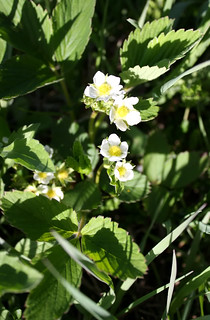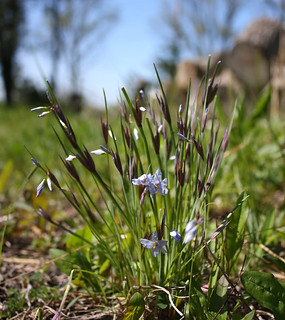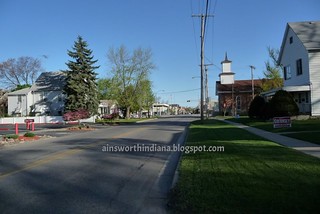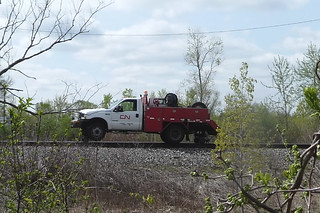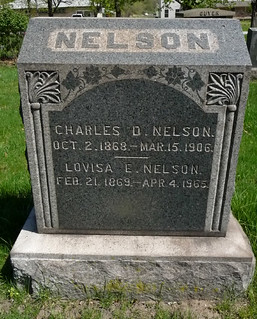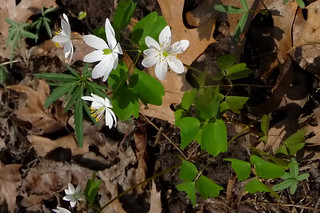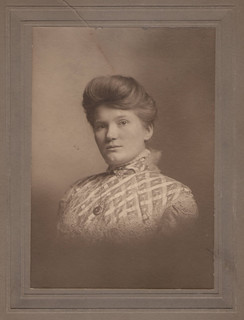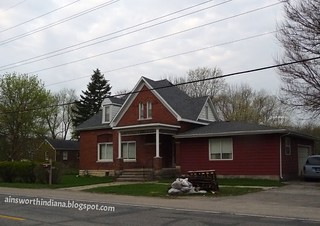 (Click on image to enlarge)
(Click on image to enlarge)
Advertisement from the Hobart Gazette of May 13, 1904.
Hugh Dotzer came to the United States from Germany in 1881 or 1882 at about 20 years of age. In 1888 he married Eva Peck in Porter County, Indiana. By 1900 they were living in Union Township, Porter County, and had three children: Matilda, 11; John, 6; and Valeska, 2. Hugh called himself a farmer, but out among the cows and the corn he worked with the soul of a musician.
Sometime between 1900 and 1904 he began selling
Adam Schaaf pianos. I do not know precisely when he moved to Ainsworth, or if there were intervening residences between Union Township and Ainsworth — the family's later history showed a tendency to move around.
On January 28, 1904, Hugh was appointed postmaster of Ainsworth, succeeding Frank Coyle, who had resigned.
The appointment apparently caused some disruption to Hugh: a month later, he announced: "Having taken charge of the Post Office at Ainsworth, I will be selling stock of Adam Schaaf pianos and organs at cost, warranted ten years. This offer good for a few days only."
He may have sold them at cost for only a few days, but he continued selling them at a profit for the remainder of his stay in Ainsworth. He ran ads like the one pictured above regularly throughout 1904 and early 1905.
In May 1904, when the people of Ainsworth organized a Sunday school, Hugh served as organist. That same month he began advertising to give piano and organ lessons every Friday to students in Ainsworth and Hobart.
Hugh's tenure as postmaster was brief. By late May he asked to be released from his duties "for the good of the service" because, as far as I can tell, the quarters he occupied did not offer suitable space for a post office. He recommended William Raschka to replace him, and William was appointed postmaster on May 24, 1904.
Hugh's
living space must have been small, or else overrun with pianos and organs. The Grand Trunk's Ainsworth agent, P.H. Swain, and his wife lived for a time with the Dotzers. In September, Swain announced that because the "Dotzer house [was] too small" he and his pregnant wife were going to move to the "Chester house." If he meant they were going to live with Henry Chester, the crowding
chez Dotzer must have been terrible indeed to make a man willing to run such a risk.
When the Ainsworth baseball team gave a dance at Ed Sauter's hall in June, Hugh was among the musicians.
At the late-summer Lake County fair, Hugh had the largest musical display — four Adam Schaaf pianos, an organ and over a thousand pieces of sheet music — beating even the Lion Store and the Kimball Co. He had to cancel his usual Friday lessons that week so he could supervise his fair display. In September, he reported that he had sold pianos to Frank Abel, a Hobart builder; Sedley's James Hardesty; and Frank Graves, who lived near Valpo.
That same month, he also announced that he had purchased ten acres in Crown Point and intended to move there in March 1905.
His musical business went on as he made improvements to his Crown Point property. In October he furnished the new Deep River church with an organ; in November he made a trip to Hammond to sell pianos; in December, Christ Heck bought a piano and Miss Martha Heck became one of Hugh's pupils.
On New Year's Day 1905, the Dotzer family hosted a large dinner, the guests including the Morgan Blachly family, Mr. and Mrs. J. Watts and the Frank Graves family. In the evening Mr. and Mrs. Fred Harney and the whole Michael Foreman family visited the Dotzers.
Hugh assured his students that he would continue to teach them after his move to Crown Point. He planned a class recital to take place on February 18.
In January 1905, a "Notice of Commendation" appeared in the
Hobart Gazette, placed by some of Hugh's students or their parents:
We, the undersigned patrons of Mr. H. Dotzer, hereby express our esteem and regard for him as a teacher. We are sorry to see him move away from our midst, yet are glad to know that he will continue as our teacher, and heartily recommend him to all.
Elsie Piske, May Abel, Mrs. D. Owens, Ella Jonas, W. Wilson, Dr. Morton, C. Heck, S. Lightner, C. Schnabel, M. Blachly, W. Raschka, M. Wagoner, John Gruel, Miss T. Triebess, John Springman, H. Carey, Clara Sauter, Etta Mander, H. Stevens.
Early in the afternoon on Saturday, February 18, two sleighloads of pianists and spectators drove from Ainsworth to the spacious home of Mr. and Mrs. Seward Lightner in Hobart, where the recital began at 2:00 p.m. It was well attended, with about 20 student performers from Hobart and Ainsworth, and an audience of their family and friends; fortunately Alwin Wild, a Hobart undertaker, had furnished additional chairs.
March came and Hugh went to Crown Point, suspending lessons for three weeks while he got settled.
Whether he resumed them, and for how long, I do not know. In May of 1907 the
Gazette mentioned, rather off-handedly, that Hugh had moved to Danville, Illinois. November of 1907 found him in Fort Wayne, Indiana, offering piano and organ lessons as well as the tuning and repairing of instruments.
After that we lose sight of him. It seems he stayed in Fort Wayne; he died there in March 1918. The 1920 census reports the widowed Eva Dotzer working as a live-in servant in a Fort Wayne home.
Sources:
♦ 1900 Census.
♦ 1910 Census.
♦ 1920 Census.
♦ "Ainsworth Pick-Ups." Hobart Gazette 9 Sept. 1904; 23 Sept. 1904; 30 Sept. 1904; 7 Oct. 1904; 21 Oct. 1904; 4 Nov. 1904; 25 Nov. 1904; 23 Dec. 1904; 6 Jan. 1905; 13 Jan. 1905; 27 Jan. 1905; 17 Feb. 1905; 24 Feb. 1905.
♦ Ballantyne, Dorothy and Robert Adams. Along the Route: A History of Hobart, Indiana, Post Offices and Postmasters. Hobart: The Hobart Historical Society, Inc., 1992.
♦ Dotzer, Hugh. Advertisement. Fort Wayne Journal-Gazette 24 Nov. 1907.
♦ Dotzer, Hugh. Advertisement. Hobart Gazette 13 May 1904.
♦ "General News Items." Hobart Gazette 26 Feb. 1904; 27 May 1904; 3 June 1904; 10 June 1904; 26 Aug. 1904; 9 Sept. 1904; 9 Dec. 1904; 10 May 1907.
♦ Indiana Marriage Collection.
♦ Indiana WPA Death Records Index.
♦ "Local Drifts." Hobart Gazette 5 Feb. 1904; 10 Mar. 1905.
♦ "Notice of Commendation." Hobart Gazette 6 Jan. 1905.
♦ "Sunday School Organized at Ainsworth." Hobart Gazette 20 May 1904.
